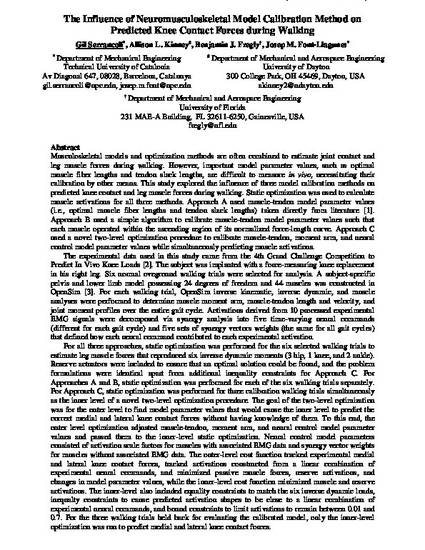
Article
The Influence of Neuromusculoskeletal Model Calibration Method on Predicted Knee Contact Forces during Walking
ECCOMAS Thematic Conference on Multibody Dynamics
Document Type
Conference Paper
Publication Date
6-1-2015
Abstract
This study explored the influence of three model calibration methods on predicted knee contact and leg muscle forces during walking. Static optimization was used to calculate muscle activations for all three methods. Approach A used muscle-tendon model parameter values (i.e., optimal muscle fiber lengths and tendon slack lengths) taken directly from literature. Approach B used a simple algorithm to calibrate muscle-tendon model parameter values such that each muscle operated within the ascending region of its normalized force-length curve. Approach C used a novel two-level optimization procedure to calibrate muscle-tendon, moment arm, and neural control model parameter values while simultaneously predicting muscle activations.
Document Version
Published Version
Copyright
Copyright © 2015, ECCOMAS Thematic Conference on Multibody Dynamics
Publisher
ECCOMAS Thematic Conference on Multibody Dynamics
Place of Publication
Barcelona, Spain
Peer Reviewed
Yes
Disciplines
Citation Information
Gil Serrancolí, Allison Kinney, Benjamin J. Fregly and Josep M. Font-Llagunes. "The Influence of Neuromusculoskeletal Model Calibration Method on Predicted Knee Contact Forces during Walking" ECCOMAS Thematic Conference on Multibody Dynamics (2015) Available at: http://works.bepress.com/allison_kinney/14/
Document is made available for download in compliance with the publisher's policies on self-archiving.
Permission documentation is on file.